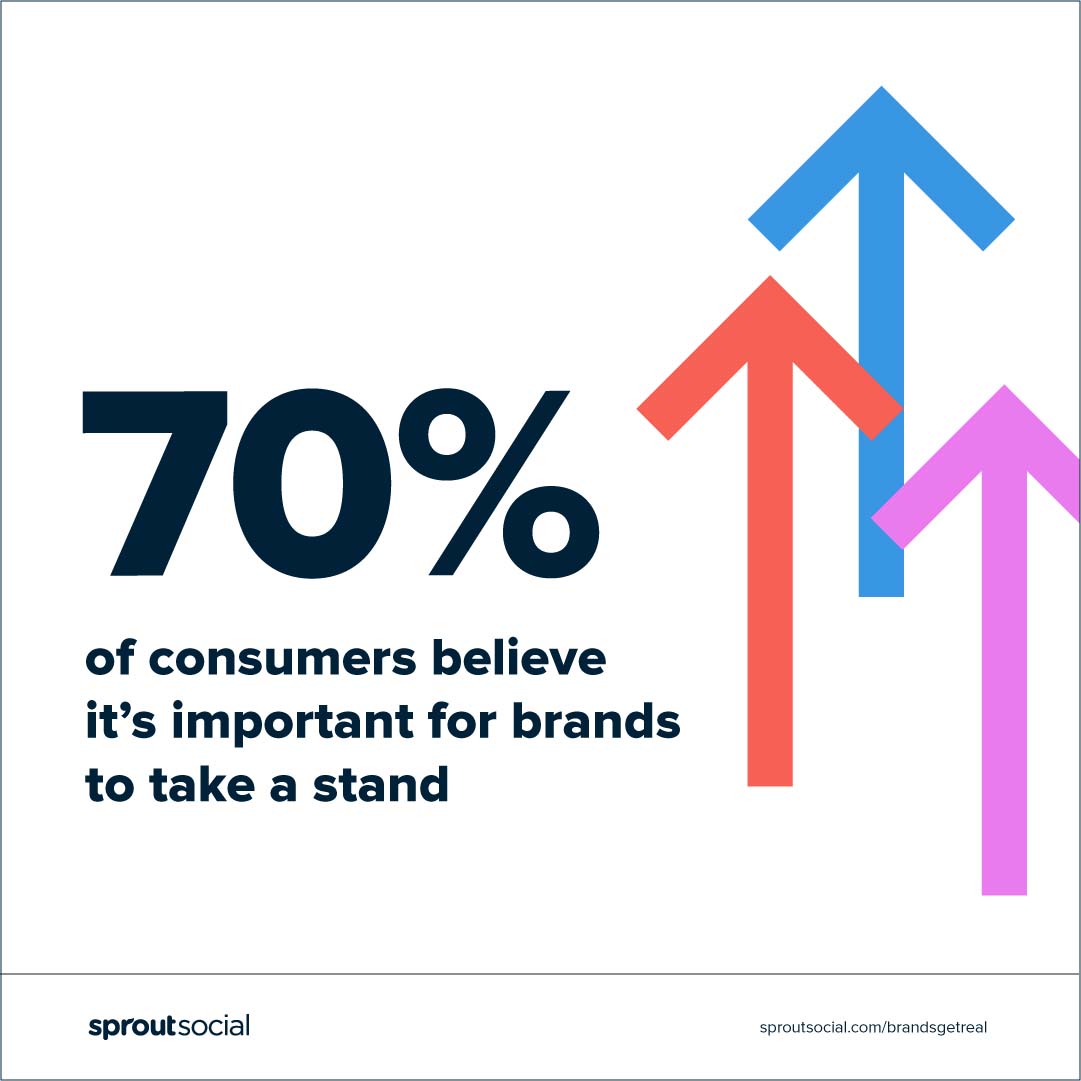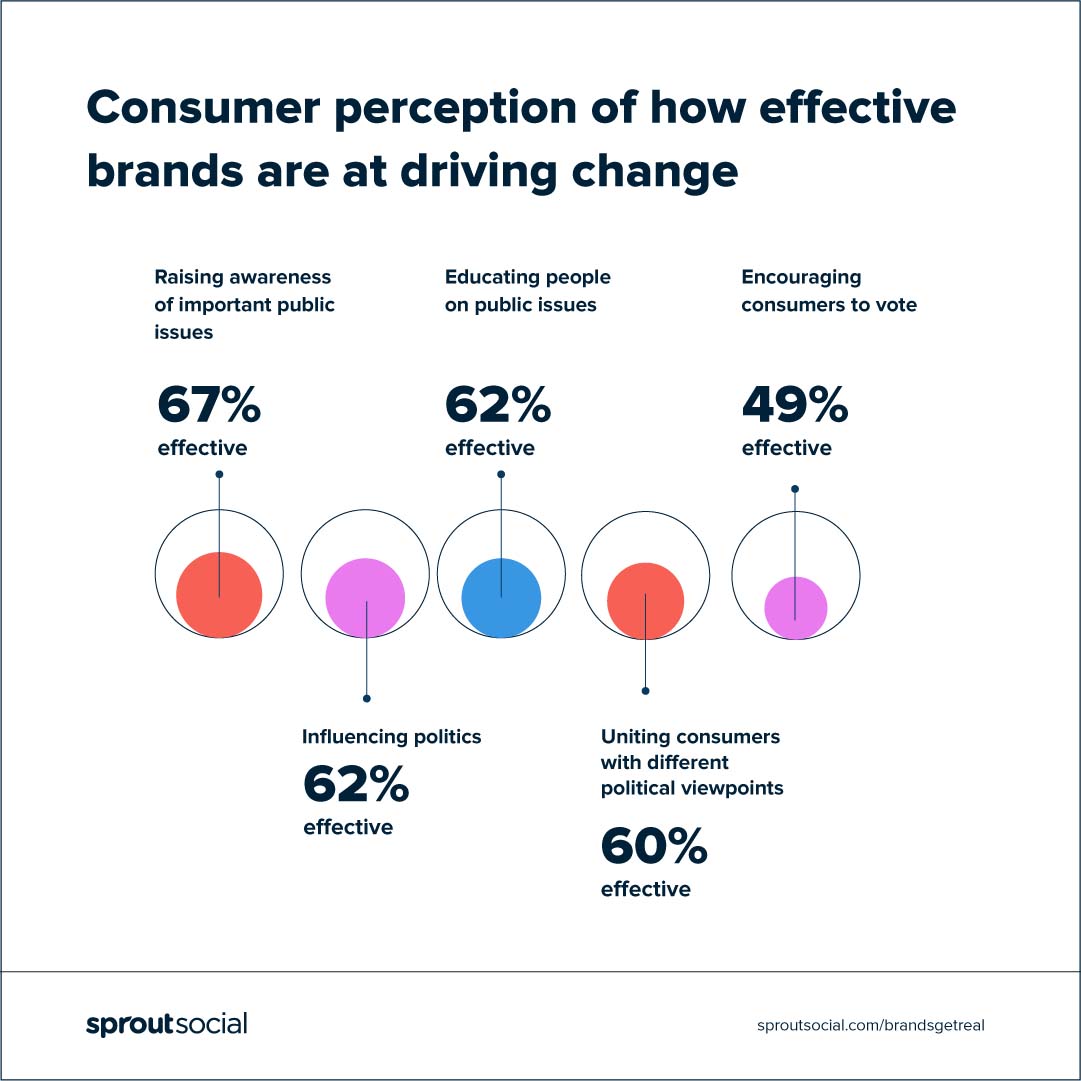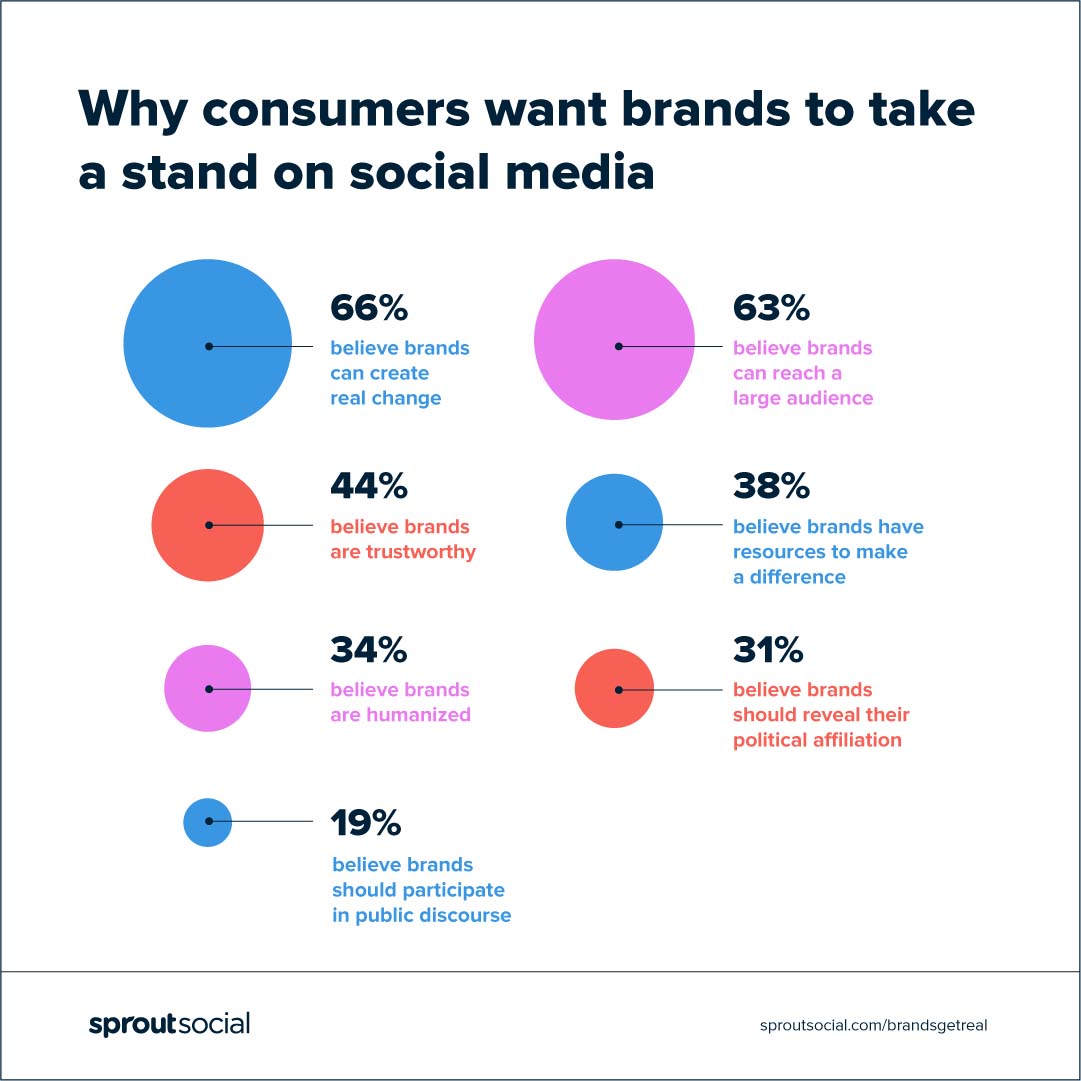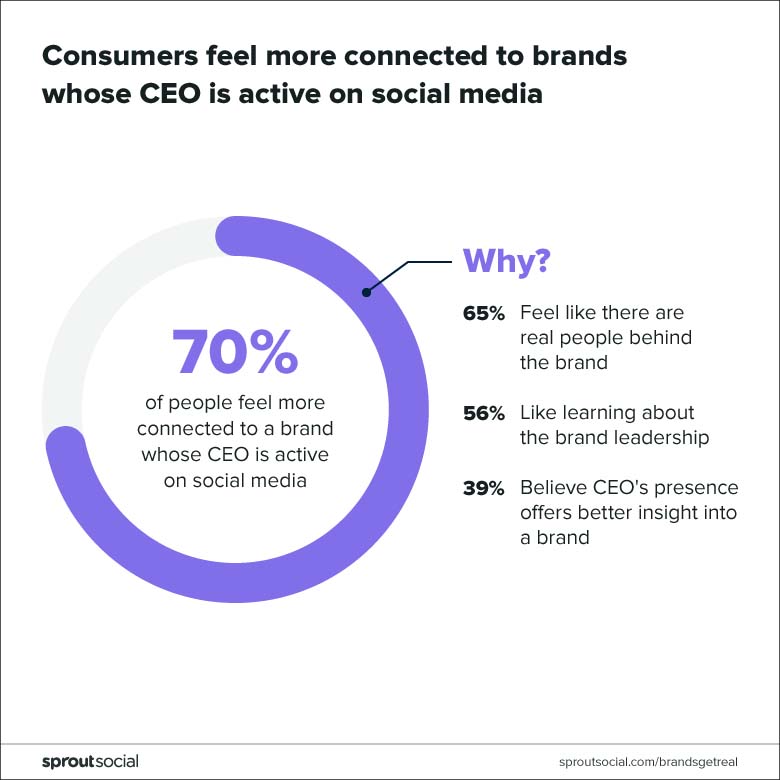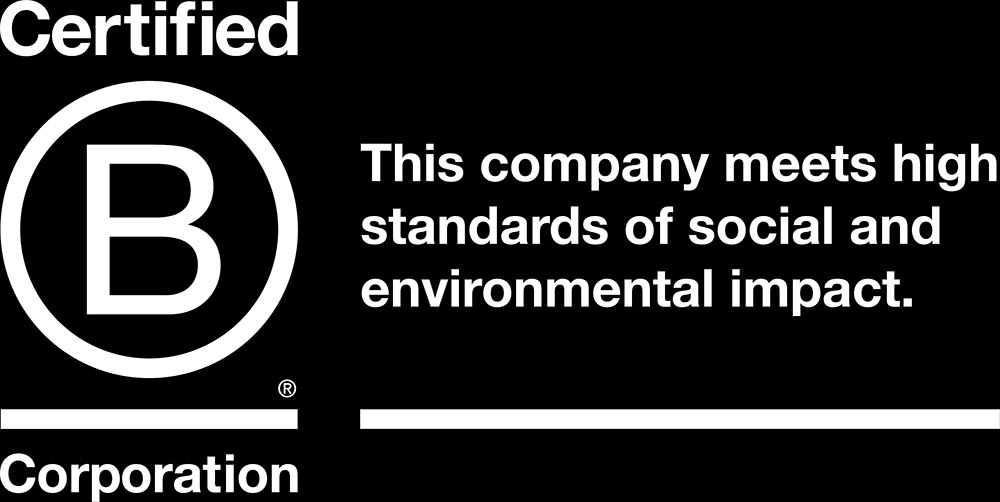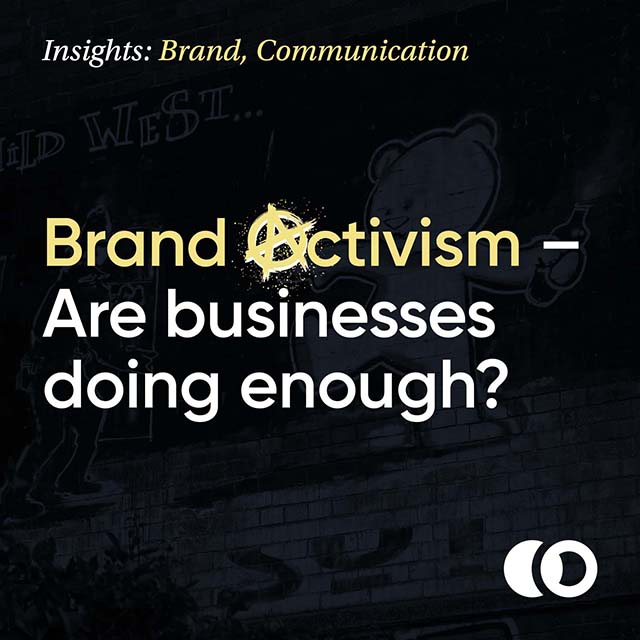
The Archive
What is brand activism? And are businesses doing enough…
Author: Ed Garrett | 10 minute read
The Business for Good movement has been gaining momentum in our network and the broader South West region for years. Beyond being good, what more can and should we do to incorporate brand activism into our comms and content strategy?
It was the Future Leap’s Festival of Sustainable Business in 2019 that really opened our eyes to the local sustainability sector. At a time when our design work was predominantly focused on charities and non-profits, the event highlighted the positive work taking place in the local private sector and what we could do as designers to elevate these organisations and amplify their impact.
Fast forward 5 years, and having travelled the world speaking to businesses that are using their work as a platform to inspire positive change, we believe now more than ever that businesses have a crucial role to play in improving the social, economic and environmental issues that we all want to see fixed.
We’re fortunate enough to be surrounded by work that inspires us on a daily basis. However, while no one organisation or policy has given us this impression, we feel the level of urgency that we see here in the wider UK business community falls way behind what is needed to solve the potentially existential crisis that lies before us. It’s this feeling, shared by others in our network, that has inspired us to discuss brand activism.
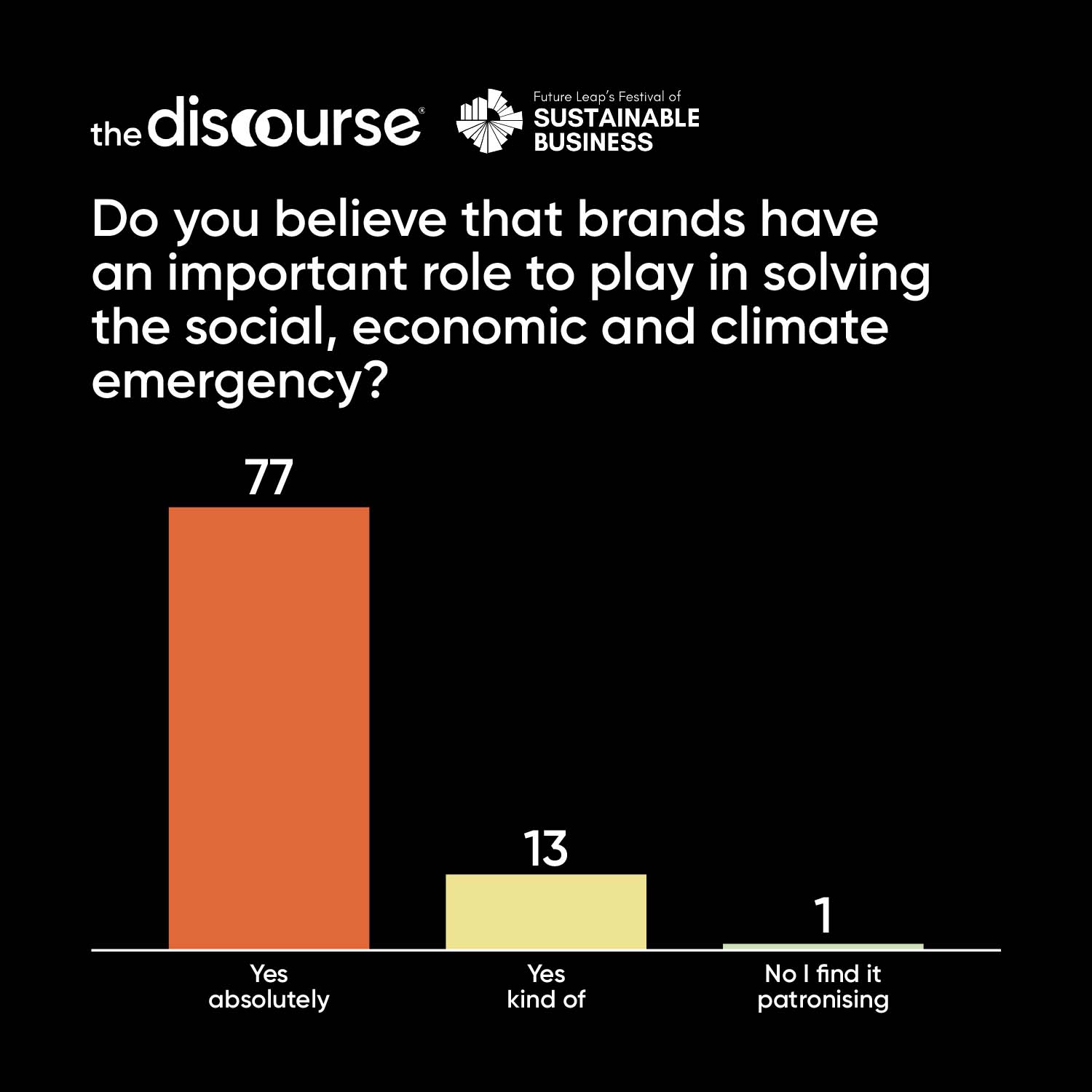
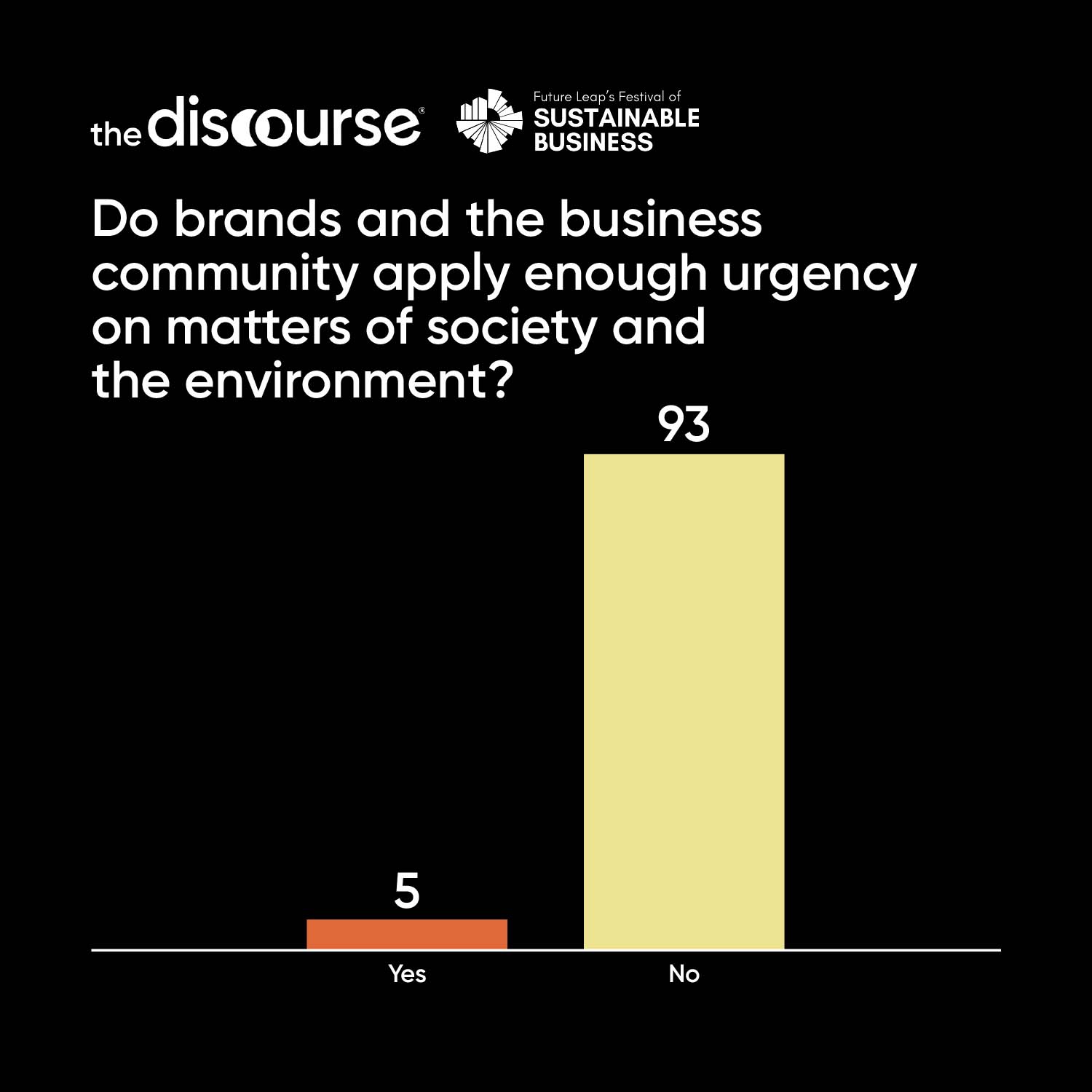
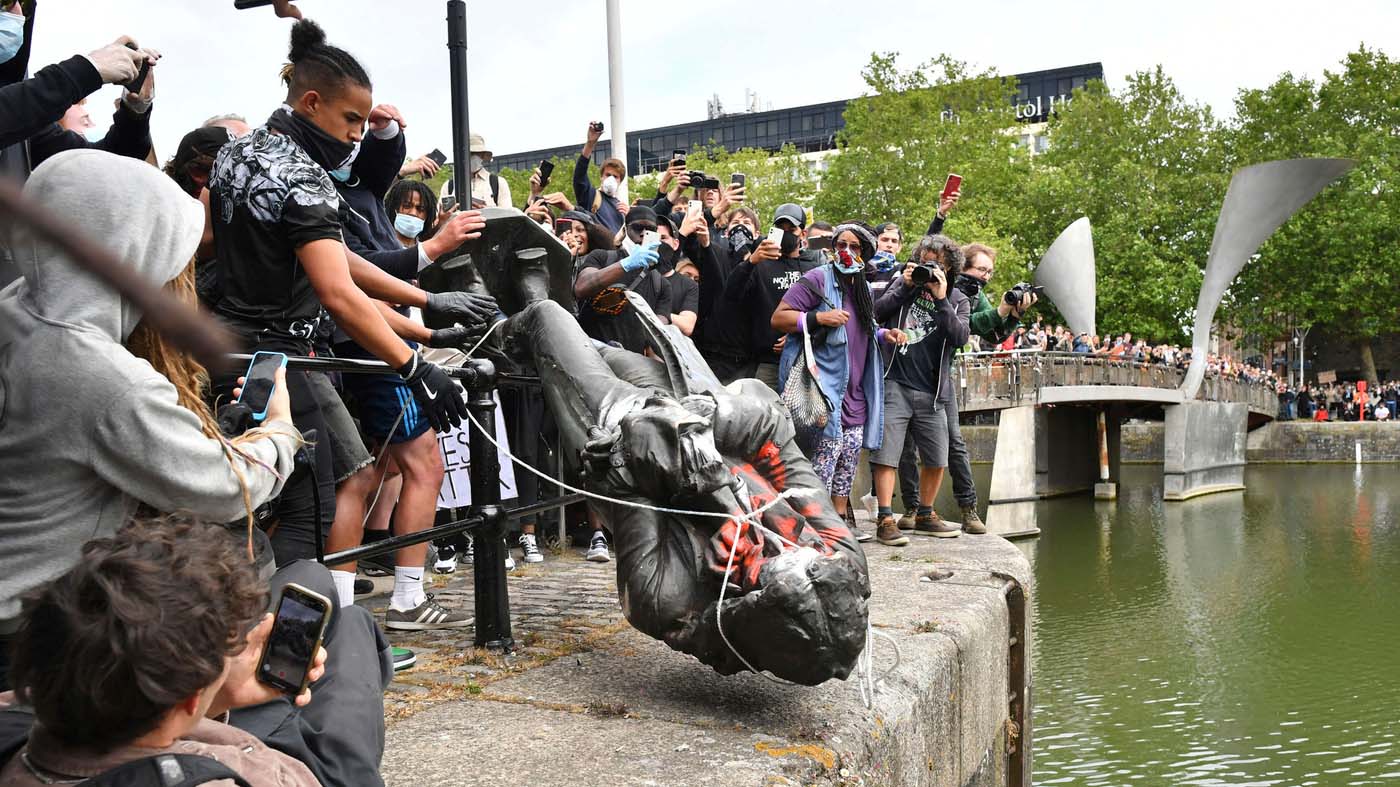
Bristol, a city on the front line
The movement aimed to challenge car-centric urban planning and promote sustainable, community-oriented alternatives by organising street parties and protests against the dominance of automobiles in public spaces.
The riots were sparked by local communities resisting the construction of Tesco supermarkets, reflecting concerns over corporate encroachment, the impact on small businesses, and the perceived homogenization of local economies.
In opposition to the United Kingdom’s decision to leave the European Union. Demonstrators voiced concerns about the economic, social, and political consequences of Brexit, advocating for a second referendum or reconsideration of the decision.
The protests emerged globally in response to instances of police brutality and systemic racism, particularly in the United States. Protesters sought justice for victims like George Floyd and called for an end to racial inequality, police violence, and discrimination against Black communities.
The protests were against the proposed Police, Crime, Sentencing and Courts Bill. Demonstrators argued that the bill threatened civil liberties by granting increased powers to the police, restricting the right to protest, and undermining democratic freedoms.
This isn’t to say that we endorse every single action that took place during these events, but it’s important to understand that we’ve grown up in a city and around people that are not afraid to fight for their beliefs and be disruptive in the process.
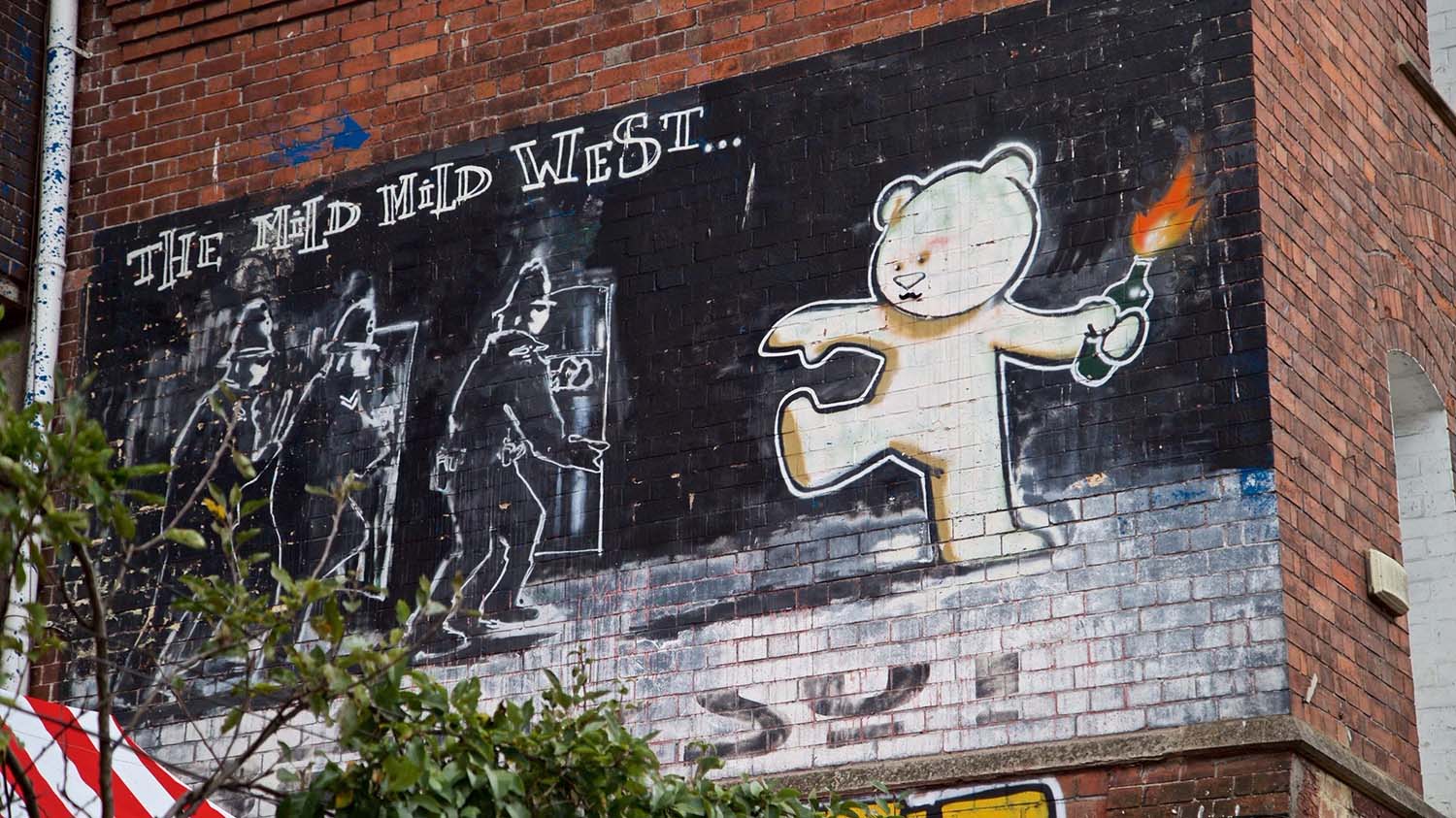
From a creative perspective, we’re also blessed to have had some truly incredible and controversial artists call Bristol their home over the years. One of my stand out memories as a teenager was making tea for Banksy as he painted the ‘Mild Mild West’ mural on the building next to our record shop on Stokes Croft in 1999. An image which was created in response to violent behaviour by the authorities at unlicensed music events here in the city.
We’re going to move on, but it’s important to understand that despite only having founded our agency in the last five years, we have a long-standing relationship and years of experience around protest and activism.
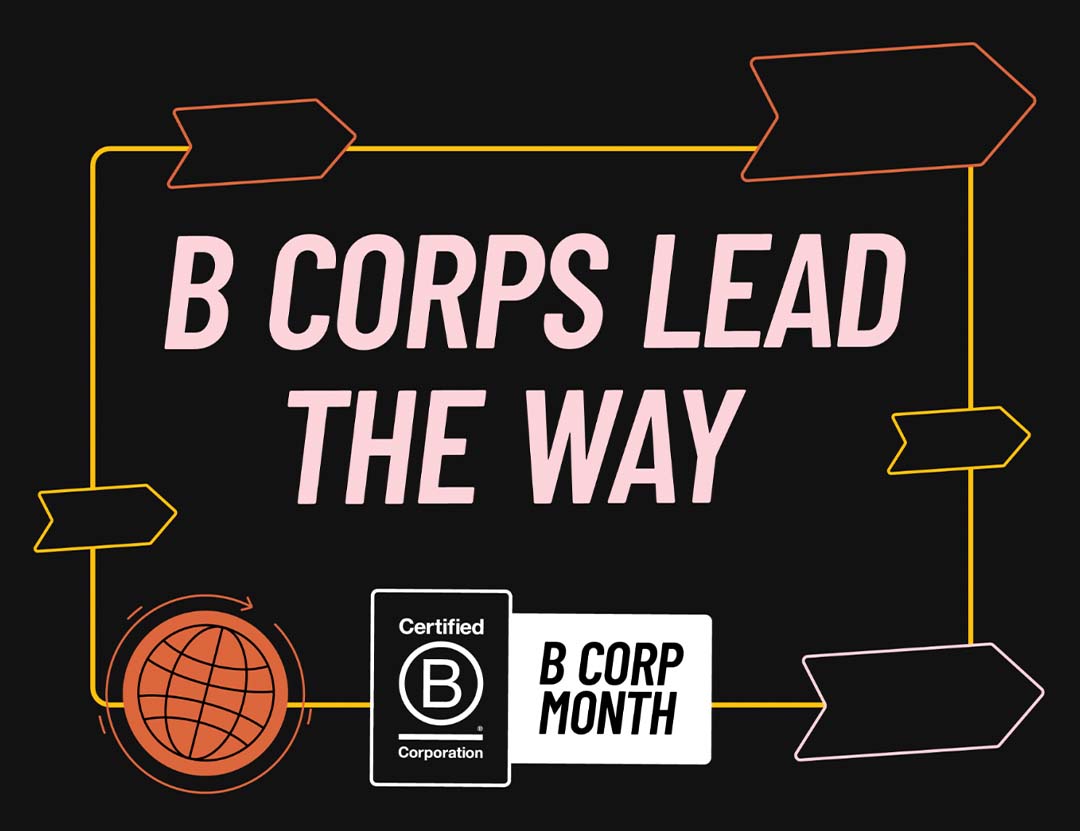
Brand and Corporate Citizenship, and what’s next?
We need to recognise that there is a spectrum of activity and action that businesses can adopt on their journey to becoming a force for positive change, which also encompasses your approach to and appetite for activism.
The evolution from basic good practice to a more comprehensive approach to corporate responsibility reflects the growing awareness of the connection between a business’s financial success, their social responsibility, and environmental stewardship.
Doing good and making money are less and less being seen as separate endeavours, and brand citizenship is an example of where brand equity can be created, whilst also furthering good causes. This type of work also plays a crucial role in signposting to clients, customers or consumers, what is happening internally in your organisation. This helps them to understand the inner workings of your brand.
At one end of this scale you have a basic level of good practice which essentially means doing the right thing by your people, customers and the planet. In other words, just be nice to people and don’t wreck the place!
Moving up the scale, you have more formal frameworks and commitments to brand and corporate citizenship. In her 2018 book ‘Do Good’, Anne Thompson describes a tried and tested approach to corporate citizenship and emphasises that businesses should integrate social and environmental concerns into their operations and core strategy. Not just for ethical reasons, but also for competitive advantage.
She advocates for companies to go beyond charitable giving and CSR, embedding social purpose into their brand identity, and engaging in practices that fundamentally benefit society and the environment, while also driving business success. Thompson argues that this approach leads to a positive impact on the world and enhances a company’s reputation, employee engagement, and long-term profitability.
The ME-to-WE continuum of Anne’s Brand Citizenship model consists of five steps:
- Trust: Building trust through reliability, honesty, and integrity in all operations.
- Enrichment: Enhancing customers’ lives through meaningful experiences and products.
- Responsibility: Acting ethically and sustainably, considering the impact on all stakeholders.
- Community: Building a sense of belonging and community among customers and employees.
- Contribution: Making a positive impact on society and the environment beyond the business’s immediate interests.
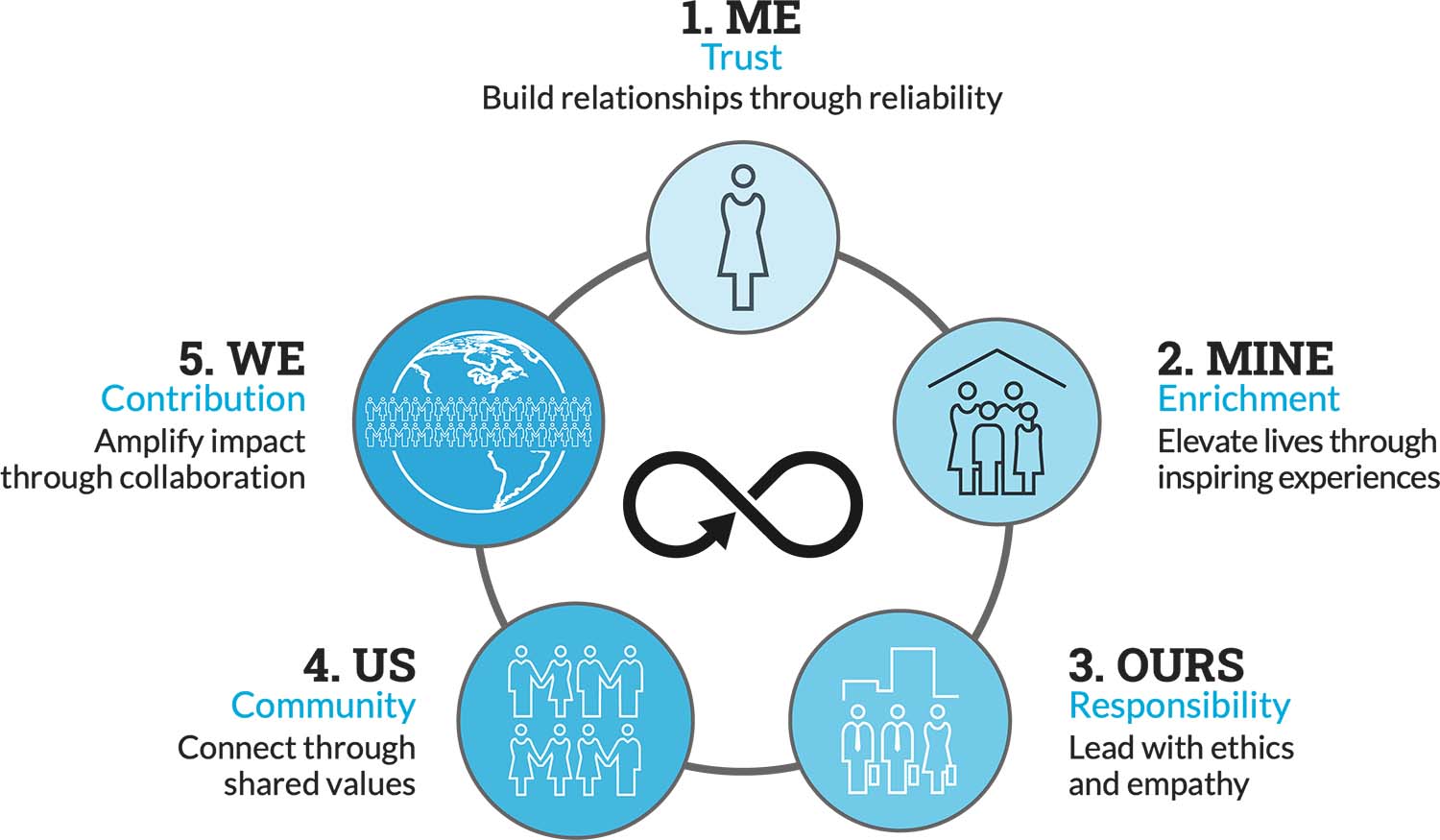
At very least, we encourage businesses to adopt the first three principles and operate on an ethically sound basis with everything you do. This is a good starting point.
Beyond this, we now have legal commitments and certifications to help leverage your business as a force for good. You can learn more on this from the team at B Lab. We believe that they are the best people to tell you about the B Corp movement and we recommend that you visit the B Lab website.
So what next? How do we take this work to the next level and confidently apply the level of passion and urgency that is often displayed by the social and environmental activist groups.
“Every brand can be involved in making the world a better, fairer, more equitable place. For some that will look like brand activism, for others it might just be about consistently and authentically putting values into action. Whatever the case, we all need to work together to protect and care for our planet and its people.”
Rin Hamburgh of RH&Co.
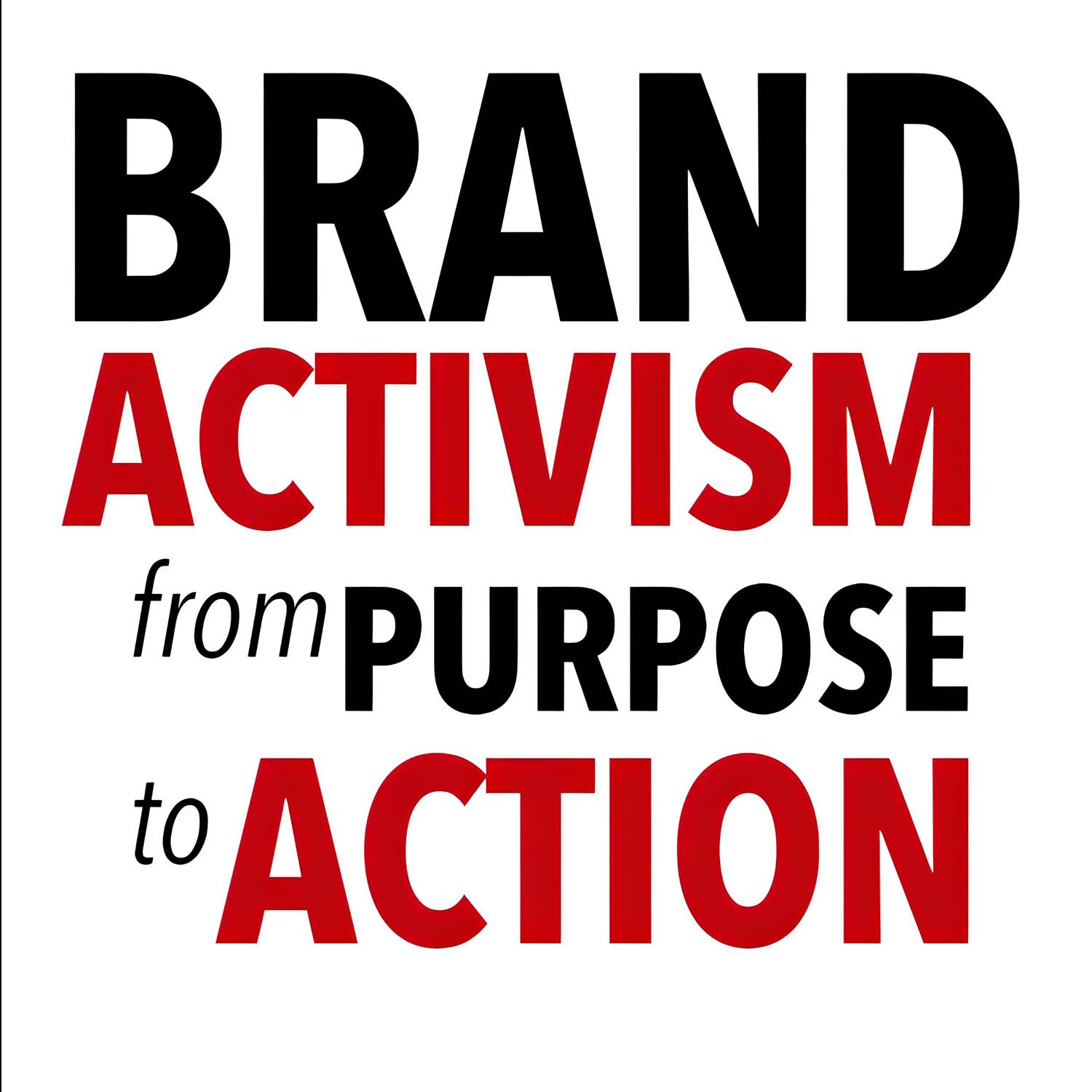
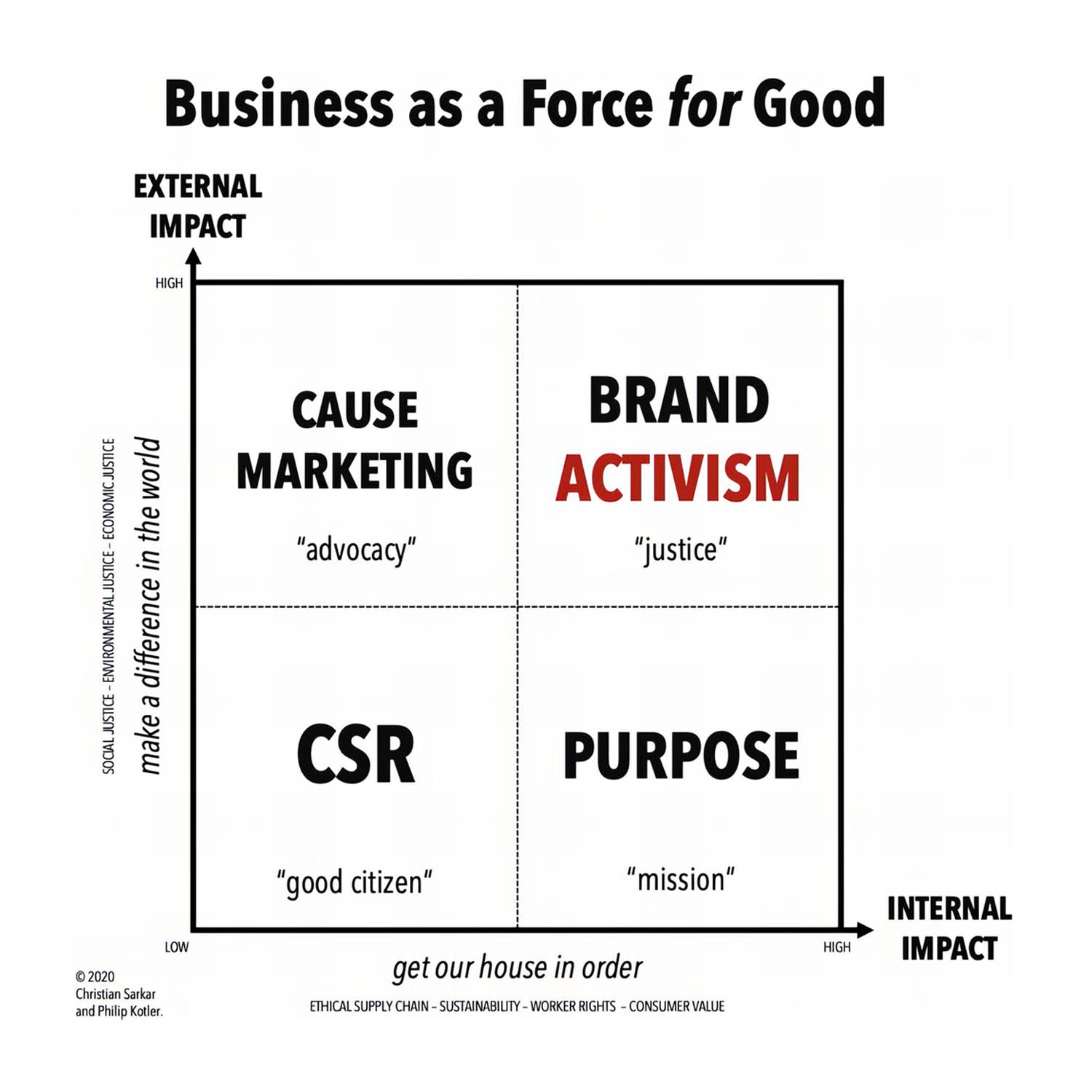
The role of brands in social and environmental activism
According to activistbrands.com and the book written by Christian Sarkar and Philip Kotler, brand activism is a ‘business’s efforts to promote, impede, or direct social, political, economic, and/or environmental reform, with the desire to promote or impede improvements in society’.
Activism is an interesting word. There’s no denying the fact that to some people it feels extreme, provocative, divisive, and ultimately political. We do understand why certain businesses, organisations and founders have chosen to take a politically neutral position when it comes to their comms and public opinions. But at what point does politically neutral become a blocker to progress?
One way to approach this is by speaking out against policies as opposed to people or parties. This way you can avoid making an outright allegiance to any one party and advocate for a cause that you believe in. Kerry Thorpe, the Head of Communications from Ben & Jerry’s, encouraged this approach when we heard her speak at an Enviral event on this subject.
We also believe that being authentic is as important as being disruptive. Hopefully it’s encouraging to hear that we now see brands who are more confident establishing their activist voice. There are a few reasons we believe this is happening.
First and foremost, consumers today, particularly younger generations, are socially conscious and value-driven with their spending. They expect the brands they support to align with their own beliefs and to contribute positively to society and the environment.
There’s plenty of research supports this. The #BrandsGetReal report from Sprout Social provides some fantastic insights on the subject.
Based on these findings, we believe that at some stage your moral standing will have an impact on your bottom line. Additionally, the rise of social media and prominence of personal branding has given businesses a platform to directly communicate with their audience, making it easier for them to take a social and political stance.
“Business as usual is currently a political choice.”
Robby Gillet, Ad Free Cities
The rise of personal brands
On the subject of personal brands, it’s clear that the way we think of brands today has changed, with founders and team members increasingly under the spotlight. Customers don’t just see the brand on a shelf anymore, the personal branding of key individuals is much more visible than it used to be. This humanises the social responsibility of a brand, as it’s now widely acknowledged that there are real people behind these logos and products.
Most brands now recognise the importance of purpose, understanding that consumers are more likely to connect with and remain loyal to brands that share their values. This shift also reflects a broader cultural movement where businesses recognise their role in influencing people’s behaviour, and are proactively participating in conversations surrounding social, environmental, and political issues.
So what does this look like in practice, and does it always come off as intended?

The power of design to inspire action and drive change
The influence of design and marketing in our lives is undeniable. In his blog on 75 Media’s web page, a UK based OOH ad agency, Paul Inman writes ‘it has been estimated that an adult in a metropolitan area may see anywhere from 50 to 400 advertisements per day. This includes ads and brands seen on TV, online, billboards, social media, and more’.
With the rise of social media in the last 15 years, the opportunity brands have to speak to and influence their customers’ behaviour is greater than ever. So what do we do with this power? Do we use it to fuel an unsustainable cycle of consumerism and product sales, or do we use it to influence positive change and help the people in the world that need it the most?
These examples of brand activism demonstrate where design and comms can be effective, and where it risks causing more harm to the business than good. Something to highlight here and as mentioned above, the brands are speaking out about policies and world events, as opposed to any one party.
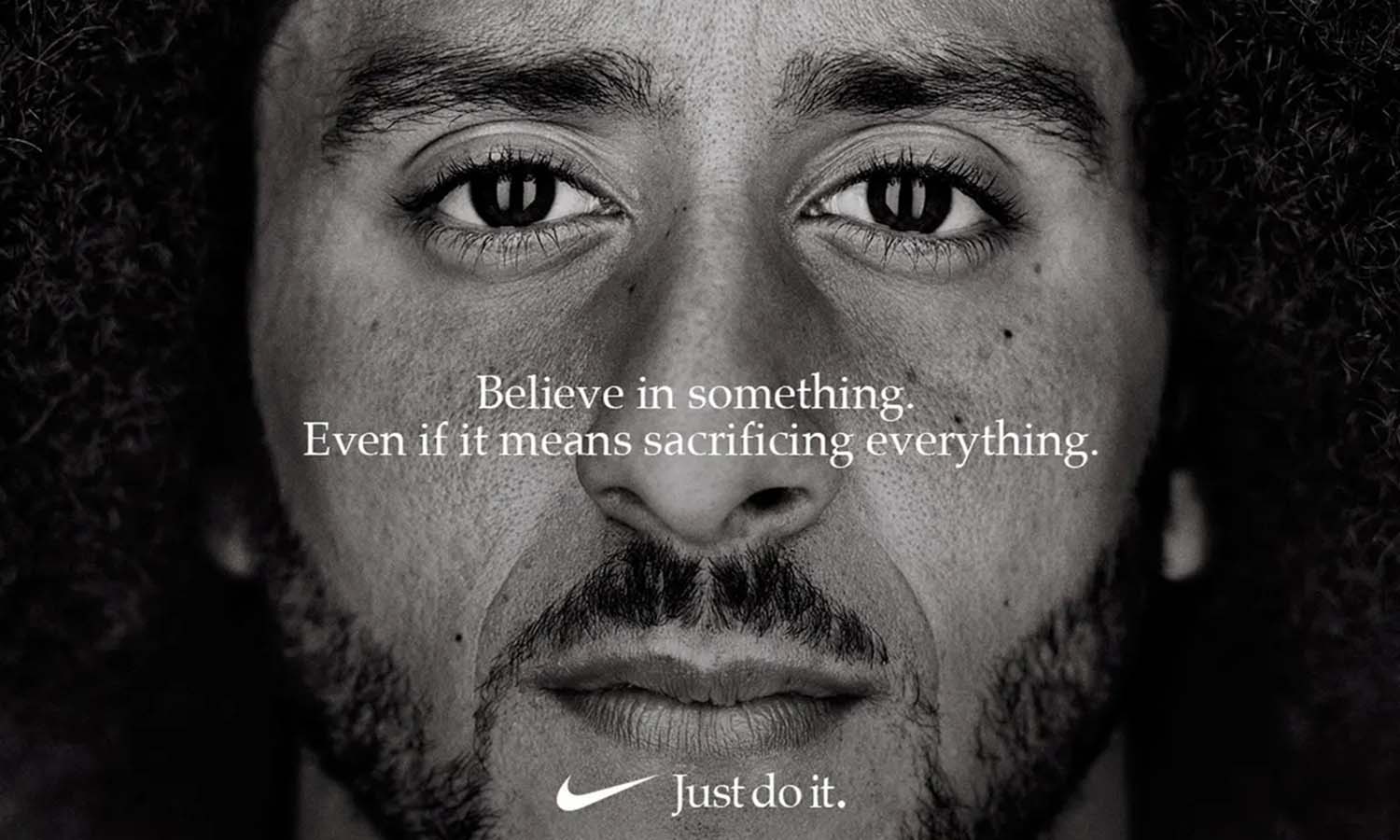
Nike’s “Just Do It” campaign featuring Colin Kaepernick in 2018 took a strong stance on social justice issues, particularly police brutality and racial inequality. While it sparked controversy, it resonated with their core demographic and led to increased sales and brand loyalty among many consumers.
The ice cream company is known for actively supporting various social and political causes. They have taken stances on issues such as climate change, racial justice, and LGBTQ+ rights. Ben & Jerry’s has successfully engaged with socially conscious consumers, and their activism is seen as an integral part of their brand identity.
This outdoor clothing company has consistently advocated for environmental conservation and sustainability. Patagonia has openly criticised government policies that are not aligned with their values, such as the reduction of public lands. Their commitment to environmental causes has resonated with environmentally conscious consumers.
Where it has gone wrong:
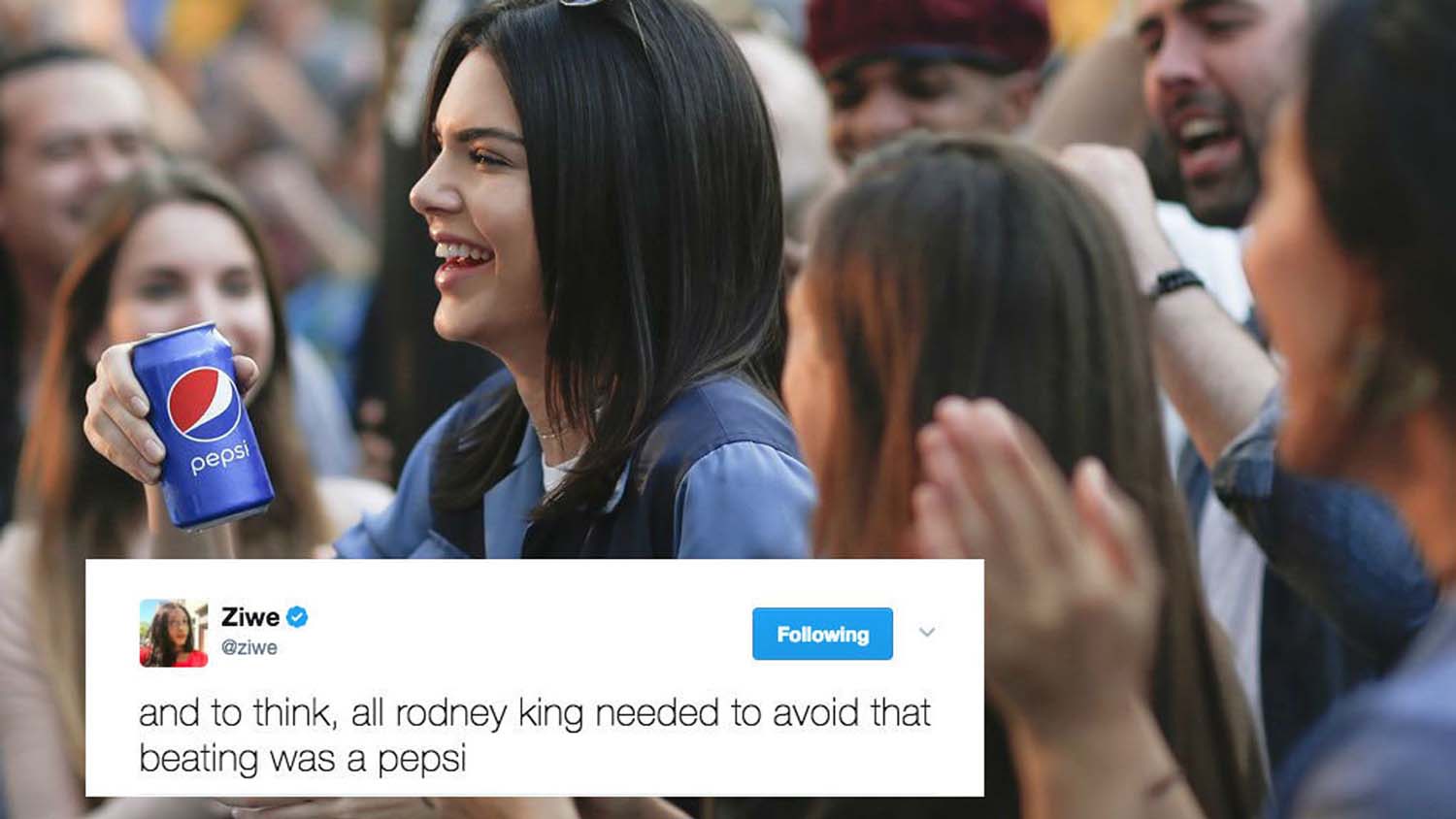
In 2017, Pepsi released an advertisement featuring Kendall Jenner participating in a protest and offering a police officer a can of Pepsi as a gesture of peace. The ad was widely criticised for appropriating and trivialising serious social and political issues, such as the Black Lives Matter movement. The brand faced significant backlash and the ad was eventually pulled.
In 2019, Gillette released a campaign titled ‘The Best Men Can Be’ challenging toxic masculinity and urging men to be better. While the message aimed to address important issues, it faced backlash from consumers who felt the brand was being preachy and critical of its own customer base. This led to calls for a boycott from certain customers and a negative impact on sales.
On a more local level, the Arnofini, met controversy when they cancelled the Palestine film festival last year after citing that they were concerned it will be “construed as political activity”, and as an arts venue was legally obliged follow government guidance to be apolitical. This raises the challenge businesses face when navigating political waters. On one hand, there’s a desire to uphold values and support causes aligned with your brand identity. On the other hand, there may be legal or regulatory constraints, as well as concerns about alienating certain audiences or stakeholders.
In these instances, the issues can be attributed to a disconnect between the brand’s campaign message and the authenticity it lacked with their established brand values. To avoid such pitfalls, there needs to be a genuine and long-term commitment to the causes being supported, as well as a thorough understanding of your audience’s values.
By contrast, in the examples of Nike, Ben & Jerry’s and Patagonia, the brand activism adds depth to your brand narrative, speaking loudly to both those in power, and inspiring others to act. By actively engaging with social or environmental causes, such brands not only create meaningful change, but also help build their brand equity with customers who resonate with their cause.
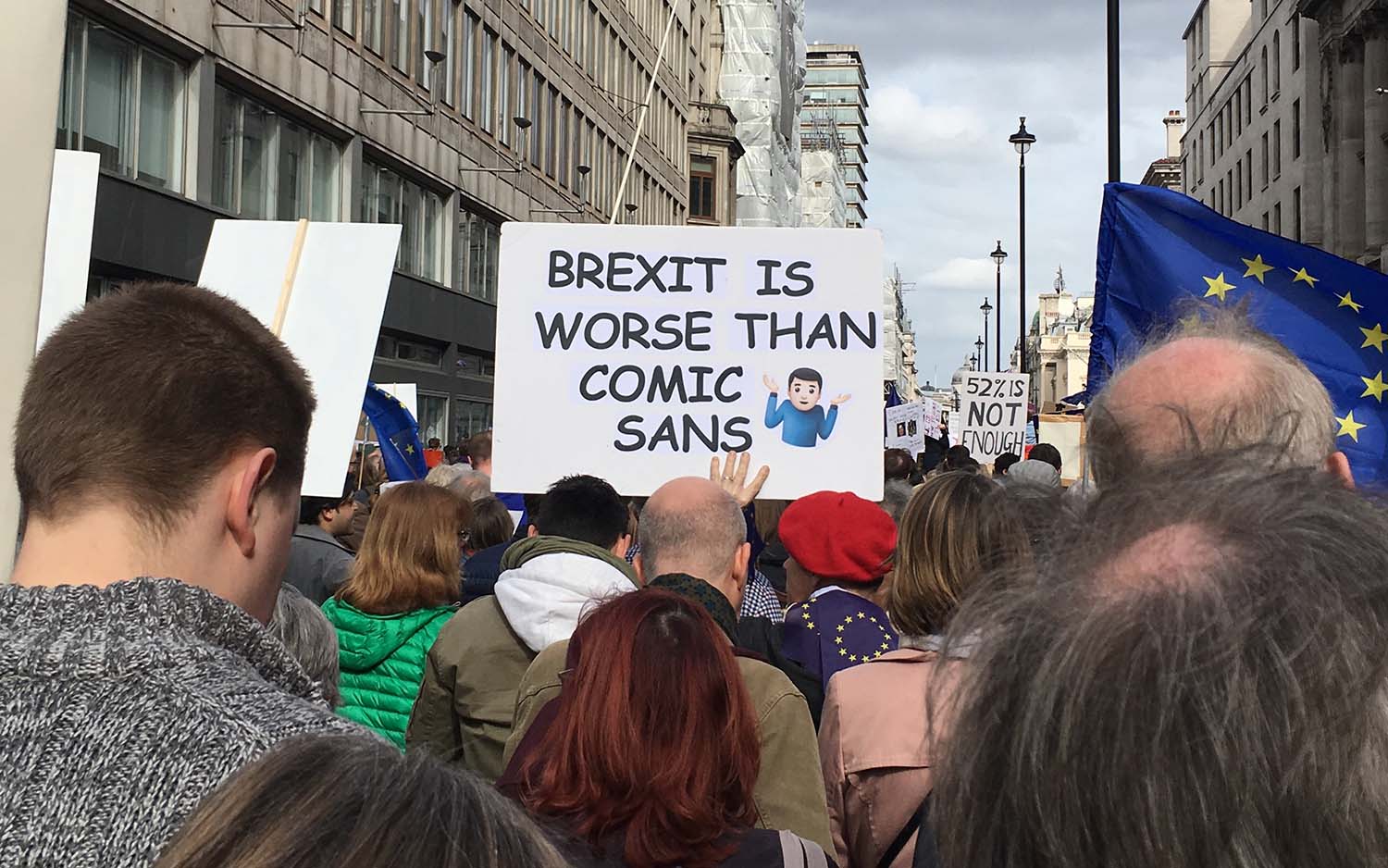
Conclusion:
It’s important to consider authenticity. We’ve all seen examples of brands that appear to be jumping on the sustainability bandwagon as a marketing strategy, but people are wising up to this and will see through it.
The other point to consider is this – are you the right person to be delivering this message? If not, you can still use your power as a brand to amplify the voices of others and give them a platform to get their message heard. Tamsin Omond, climate activist and one of the founding members of Extinction Rebellion, touches on this in an episode of the ‘Brand Activism’ podcast which is free to access in the UK on Audible.
Done well, design and even humour is a great way to enter these conversations and break the back of difficult subjects. We can learn a lot from the protest movement here.
“Brands should be taking their own responsibility for their social and environmental impact. Promise what you can, always look to improve and ensure what you say and what you do align.”
Kyrby Brown, WECIL and Disability.Inc.
And there you have it – At The Discourse, we have been designing incredible brand identities, websites and content marketing campaigns for purpose-led businesses and charities for well over 5 years. Our clients typically spend from £5k to £20k on brand strategy and design, website projects range from £5k to £20k depending on size and functionality.
Content strategy and production can vary heavily depending on the type of organisation and your internal resources. Typically speaking, we’d expect clients to spend in the region of £5k to £10k on their initial strategy and tool kit, with between £1k and £3k per month on ongoing support.
We’re passionate about this topic and keen to help you along the way. If you’re ready to embrace your inner activist you can get in contact today via our contact page or by emailing us at: [email protected]


